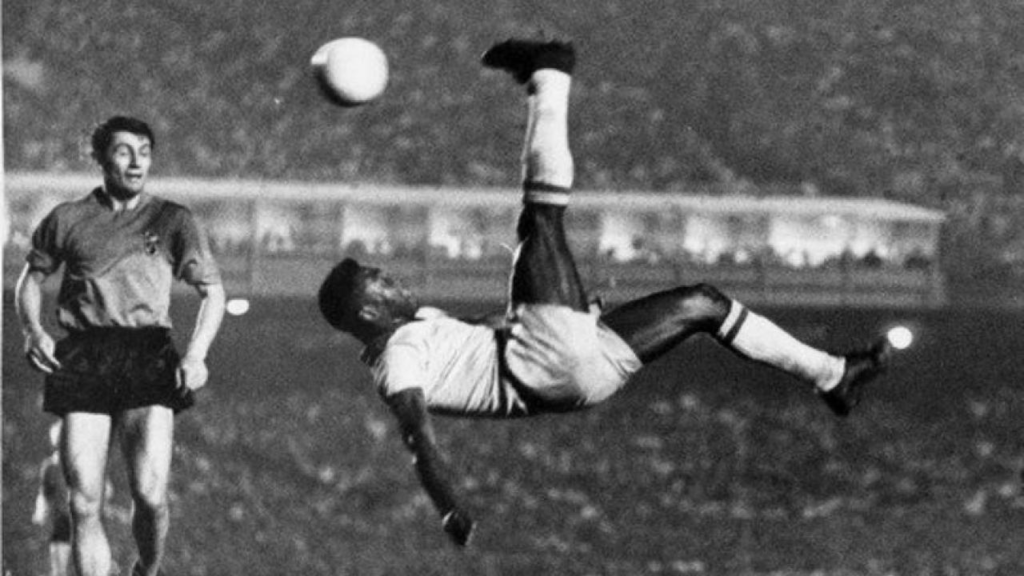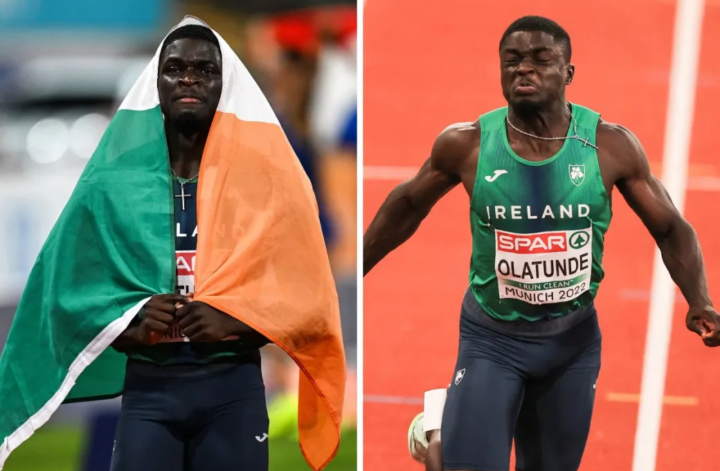Many older football analysts and former players have spoken about Pele as the true phenomenon legend of the game, leaving some to wonder why. While younger generations enjoy watching Messi and Cristiano, those who experienced Zidane, Ronaldo, and Ronaldinho in their prime may have a different perspective. Even further back, Maradona, Platini, and Matthaus were revered as top players.

The 1970s saw the legendary rivalry between Cruyff and Beckenbauer. However, those who were able to witness Pele’s talent first-hand will often claim that he is the greatest player of all time. Pele was also the first soccer player to truly become a global superstar. While Alfredo Di Stefano was also well-known around the world, the lack of modern technology at the time limited the extent to which people could experience his skills. Pele, on the other hand, was broadcast on television screens worldwide and became a household name in every country.
Edson Arantes do Nascimento, better known as Pelé, played as a forward and is recognized as the top goal scorer in the history of the sport, with 1,279 goals in 1,363 games. Pelé played for the Brazilian national team and Santos FC, leading the latter to victories in the Copa Libertadores and Intercontinental Cup in the early 1960s. He is the only player to have won the FIFA World Cup three times, in 1958, 1962, and 1970.

Pelé’s nickname, O Rei (The King), was given to him following his performance in the 1958 World Cup, where he became the first black global sporting star and a source of inspiration for many. His skills on the field were legendary, as he was known for his ability to score with either foot, anticipate his opponents’ movements, provide assists with his vision and passing, and use his dribbling skills to get past defenders. He was also known for his charismatic personality and was a household name in every country due to the widespread television coverage of his games. Pelé is credited with popularizing the phrase “The Beautiful Game” to describe soccer, and his electrifying play and penchant for spectacular goals made him a global star.

Pele was known for his exceptional scoring ability and his ability to anticipate opponents in the area and finish chances with precise and powerful shots with either foot. He was a complete forward with exceptional vision, intelligence, and passing skills, and was able to play in a variety of attacking positions. Although he often played as a main striker or center forward inside the penalty area, his wide range of skills also allowed him to play as an inside forward or second striker, or out wide. In his later career, he took on more of a playmaking role behind the strikers, often functioning as an attacking midfielder.

Pele’s playing style combined speed, creativity, technical skill, physical power, stamina, and athleticism. He had excellent technique, balance, flair, agility, and dribbling skills, and was known for using sudden changes of direction and elaborate feints to beat opponents. One of his signature moves was the drible da vaca, and he was also known for his ability to score with bending shots and his accuracy as a free-kick taker and penalty taker, although he often refrained from taking penalties.
Despite his small stature, Pele excelled in the air due to his heading accuracy, timing, and elevation. He was also known for his fair play and influential leadership on the pitch, and his sportsmanship was exemplified in his warm embrace with Bobby Moore following the Brazil vs England game at the 1970 World Cup. Pele was also known for often being a decisive player for his teams, due to his tendency to score crucial goals in important matches.

Pele was born on October 23, 1940 in Três Corações, Minas Gerais, Brazil. He was the son of professional footballer Dondinho and Celeste Arantes, and was named after inventor Thomas Edison. However, a mistake on his birth certificate led to his name being written as “Edison” instead of “Edson,” which he was actually called. Pele’s family nicknamed him “Dico,” and he later earned the nickname “Pele” during his school days when he mispronounced the name of his favorite player, Vasco da Gama’s goalkeeper Bilé. Despite the name being associated with the Hebrew word for “miracle,” its meaning in Portuguese is unknown.
Pele grew up in poverty in Bauru, São Paulo, and worked as a servant in tea shops to earn extra money. He played for several amateur teams in his youth, including Sete de Setembro, Canto do Rio, São Paulinho, and Amériquinha. He also played indoor football, or futsal, with a team called Radium, which he credited for helping him think quickly on the pitch. In 1956, Pele’s mentor Waldemar de Brito took him to try out for professional club Santos FC, where he impressed coach Lula and signed a contract in June of that year.

He made his senior team debut at the age of 15 and quickly became the top scorer in the league. His first international match was a loss against Argentina on July 7, 1957 at the Maracanã Stadium, where he scored his first goal for Brazil at the age of 16. He was then selected to play for Brazil in the 1958 FIFA World Cup in Sweden, despite being sidelined by a knee injury. In his first match, he assisted Vavá’s second goal against the USSR. At 17 years old, he became the youngest player to ever participate in the World Cup. In the semi-final against France, Pele scored a hat-trick, making him the youngest player in World Cup history to do so.
On June 29, 1958, he played in the World Cup final against Sweden, scoring two goals in Brazil’s 5-2 victory. One of his goals, where he flicked the ball over a defender before volleying it into the corner of the net, was later named as one of the best in World Cup history. Pele finished the tournament with six goals in four matches, tied for second place, and was named the best young player of the tournament. He also played a major role in increasing the popularity of soccer and inspiring others as the first black global sporting superstar. It was during the 1958 World Cup that Pele began wearing the number 10 jersey, which was assigned to him by FIFA due to a lack of organization by the Brazilian Federation. He was also retroactively given the Silver Ball as the second best player of the tournament.

After the 1958 and 1962 World Cups, European clubs such as Real Madrid, Juventus, and Manchester United tried to sign him. However, Pele remained with Santos FC. After the 1974 season, he retired from Brazilian club football, but continued to play for Santos in official matches. In 1975, he came out of semi-retirement to join the New York Cosmos of the North American Soccer League (NASL). His arrival significantly increased public interest in the sport in the US, and he opened the door for other big name players like Giorgio Chinaglia, Franz Beckenbauer, Carlos Alberto, Johan Cruyff, Eusébio, Bobby Moore, George Best, and Gordon Banks to join the league. In 1977, Pele led the Cosmos to the Soccer Bowl, scoring a hat-trick in a win over the Tampa Bay Rowdies in front of a record NASL crowd at Giants Stadium.

He ended his career by leading the Cosmos to their second Soccer Bowl title, with a 2-1 win over the Seattle Sounders in Portland, Oregon. On October 1, 1977, Pele played his final game in an exhibition match between the Cosmos and Santos at Giants Stadium, scoring the final goal of his career with a free kick. The match was attended by his father, wife, Muhammad Ali, and Bobby Moore, and was televised worldwide.
Pelé is widely regarded as one of the greatest and most popular sports figures of the 20th century. He has been frequently ranked as the best player ever and has been nicknamed “The King” since his emergence at the 1958 World Cup. His peers, such as Johan Cruyff and Carlos Alberto Torres, have praised his unique playing style, which combined speed, creativity, and technical skill with physical power, stamina, and athleticism. Many players, coaches, and journalists have praised Pelé as the greatest player of all time, with Bobby Charlton stating, “I sometimes feel as though football was invented for this magical player.” Cristiano Ronaldo and José Mourinho have also called him the greatest player in football history, with Alfredo Di Stéfano saying “Pelé was the best player ever. Lionel Messi and Cristiano Ronaldo are both great players with specific qualities, but Pelé was better.”

Pelé is arguably the most revered former professional soccer player known for his “electrifying play and penchant for spectacular goals. He has received numerous accolades, including being named the World Player of the Century by the International Federation of Football History & Statistics and Athlete of the Century by the International Olympic Committee. Time magazine also named him one of the 100 Most Important People of the 20th Century.
He has been referred to as “The Black Pearl,” “The King of Football,” “The King Pelé,” or simply “The King.” The city of Santos has even dedicated a museum to Pelé, called the Museu Pelé, which displays a collection of over 2,400 pieces of Pelé memorabilia.

In 2015, a study conducted by France Football revealed that if the Ballon d’Or award had been open to him, Pelé would have received it a record seven times. In 2020, he was named in the Ballon d’Or Dream Team, a greatest all-time XI. According to the Rec.Sport.Soccer Statistics Foundation, Pelé scored a total of 538 league goals, 775 goals in 840 official games, and 1,301 goals in 1,390 appearances during his professional career, including friendlies and tour games. He is considered one of the top scorers in football history.
Pelé’s health had begun to decline in the late 1970s, when Brazilian media reported that he had his right kidney removed. Despite this, Pelé remained active in the world of soccer, appearing at events and even making a brief return to professional play in 1975.

In November 2012, Pelé underwent a successful hip operation. However, in December 2017, he appeared in a wheelchair at the 2018 World Cup draw in Moscow, where he was photographed with President Vladimir Putin and Argentine footballer Diego Maradona. A month later, he collapsed from exhaustion and was taken to the hospital.
In 2019, Pelé was hospitalized with a urinary tract infection and underwent surgery to remove kidney stones. In February 2020, his son Edinho reported that Pelé was unable to walk independently and was reluctant to leave home, attributing his condition to a lack of rehabilitation following his hip operation.

Despite these health issues, Pelé continued to make public appearances and remained an influential figure in the world of soccer. In September 2021, he underwent surgery to remove a tumour on the right side of his colon. Although his eldest daughter Kely stated he was “doing well,” Pelé was reportedly readmitted to intensive care a few days later, before finally being released on September 30, 2021 to begin chemotherapy.
In November 2022, ESPN Brasil reported that Pelé had been taken to the hospital with “general swelling,” along with cardiac issues and concerns that his chemotherapy treatment was not having the expected effect. Kely stated that there was “no emergency,” but Pelé’s health continued to deteriorate.

In December 2022, the Albert Einstein Hospital in Morumbi, where Pelé was being treated, stated that his tumour had advanced and he required “greater care related to renal and cardiac dysfunctions.” On December 29, 2022, Pelé passed away at the age of 82 due to multiple organ failure, a complication of colon cancer.
Tributes have continue to pour in from soccer stars such as Cristiano Ronaldo, Lionel Messi, Neymar, and Kylian Mbappe, as well as from world leaders and fans around the globe.
Pelé’s funeral is set to be held at Santos’ stadium from January 2-3, 2023, where he will be remembered as one of the greatest soccer players of all time.
Joseph Omoniyi




